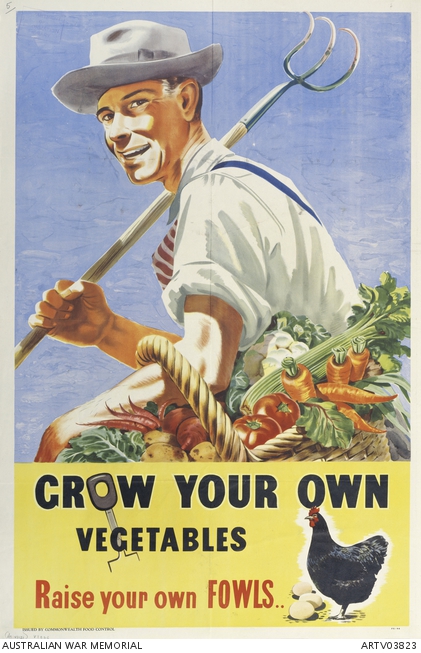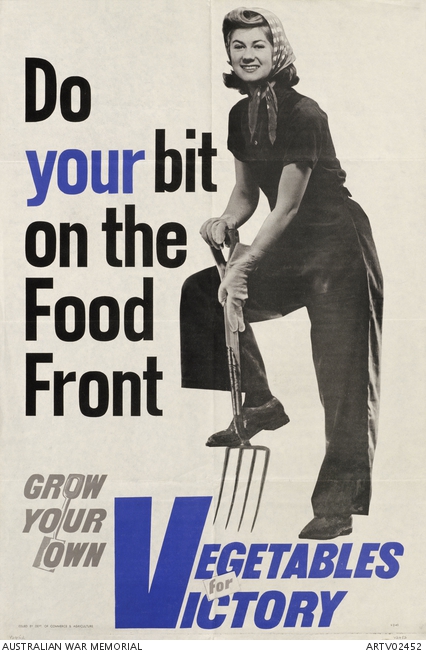Australia under attack: Exhibition Items - art
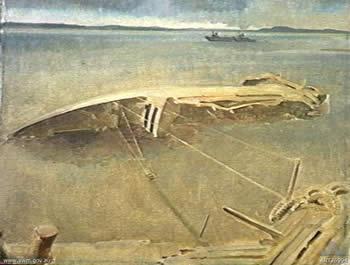
Wreck of Neptuna
Arthur Murch painted the wreck of the Neptuna shortly after the air raid. The Neptuna, a 6,000-ton freighter, was lost when her cargo of depth charges was detonated by a bomb as she lay alongside Darwin wharf. The blast destroyed the ship and killed 45 sailors and wharfies. Parts of the ship were discovered scattered around the harbour.
“Work, save, fight and so avenge the nurses!”
The Australian government used the tragic loss of the Centaur for wartime propaganda. This dramatic poster shows that hospital ships were well-lit and clearly marked with red crosses to prevent them being mistaken for warships. Seaman Martin Pash recalls: “The lights on the side of the ship lit the water up as she was going down.“
Siegmund Lewinsohn
Portrait of Tatura camp internee Siegmund Lewinsohn by fellow internee and artist Robert Hofmann. The camp and its buildings, including the watchtower, can be seen in the distance. After almost two years of internment, Lewinsohn, a refugee from Nazi Germany, who had come to Australia on the HMT Dunera in 1940, was permitted to join the Australian Military Forces
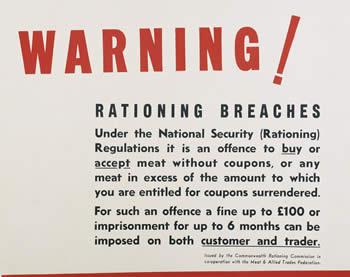
Warning: rationing breaches
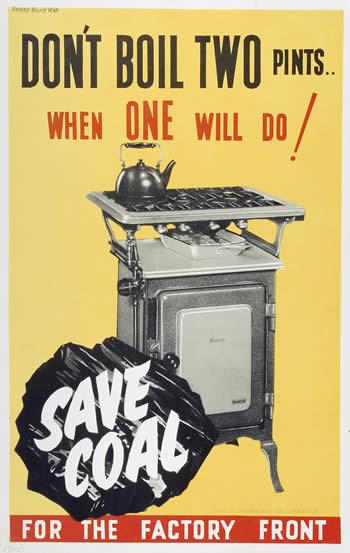
Don’t boil two pints – when one will do …
Grow your own vegetables for victory
An Australian poster that echoed the British “Dig for Victory” campaign that encouraged domestic production of essential foodstuffs.
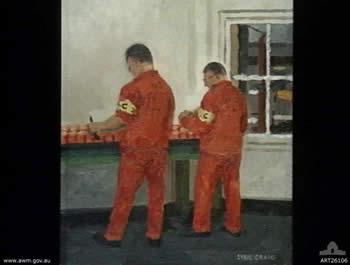
Chargemen (Detonator Section, Commonwealth Explosives Factory, Maribyrnong)
Sybil Craig worked at the Commonwealth Explosives Factory, where she made this painting of chargemen W. Fanning and T. McLellan at their workbench, packing detonators.
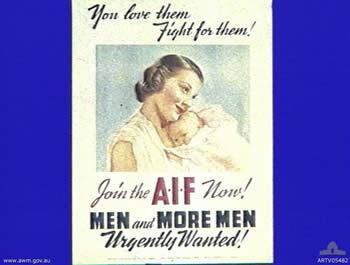
You love them, fight for them!
Coastal defence gun
Coastal defences were formed around a core of permanent gunners. Murch painted these AMF artillerymen manning a 6-inch naval gun in a coastal emplacement near Darwin.
Searchlights, Tasmania
These searchlights formed an important part of Australia’s anti-aircraft defences.
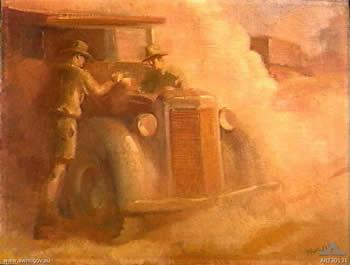
Dust at Daly Waters
Australian soldiers battle the dust as they examine the engine of a truck on the vital line of communication to Darwin.
Ringed with menace!
This poster suggests an exaggerated sense of threat – a belief that Australia was surrounded. It was produced for the Department of Aircraft Production to promote the value of the bombers it produced.
Refugees in Melbourne
During the war Australia accepted refugees from Europe and south-east Asia. The isolating experience of displaced and traumatised refugees is presented by artist Yosl Bergner – himself a refugee whose father, Melech Ravitch, had sent him from Warsaw to Australia in 1937 because of the rising wave of anti-Semitism in Poland. During the war Bergner was employed with the 6th Employment Company based at Tocumwal, in New South Wales, along with other “friendly aliens”.
One Sunday afternoon in Townsville
Hodgkinson’s work shows the beach in Townsville, on a Sunday afternoon as an American band plays from the municipal band stand. Scattered around the beach with its scorched grass, barbed wire and palms are a collection of figures: “I knew what I wanted , a beach scene showing the Yanks, the Australians, the females in the services, all mixing on the beach. After all, it was the place to go.” The painting depicts a seemingly tranquil cosmopolitan scene that masks the tension that existed between some of these groups.
US fighter ace
“He has probably the best bag in Australia to date”, wrote Hodgkinson, referring to the number of enemy aircraft shot down by 25-year-old Lieutenant Andy Reynolds, 9th Squadron, 49th Fighter Group, US Army Air Force. At the time of this portrait, Reynolds had brought down two bombers and four Zero fighters over Darwin, to go with his four earlier kills over Java. He had just been awarded the US Silver Star.
Inspecting US catalinas
These US Catalina flying boats have been hauled out of the Swan River for maintenance at the American Catalina base at Crawley Bay. The RAAF also operated several squadrons of Catalinas on maritime reconnaissance and offensive missions against the Japanese.




